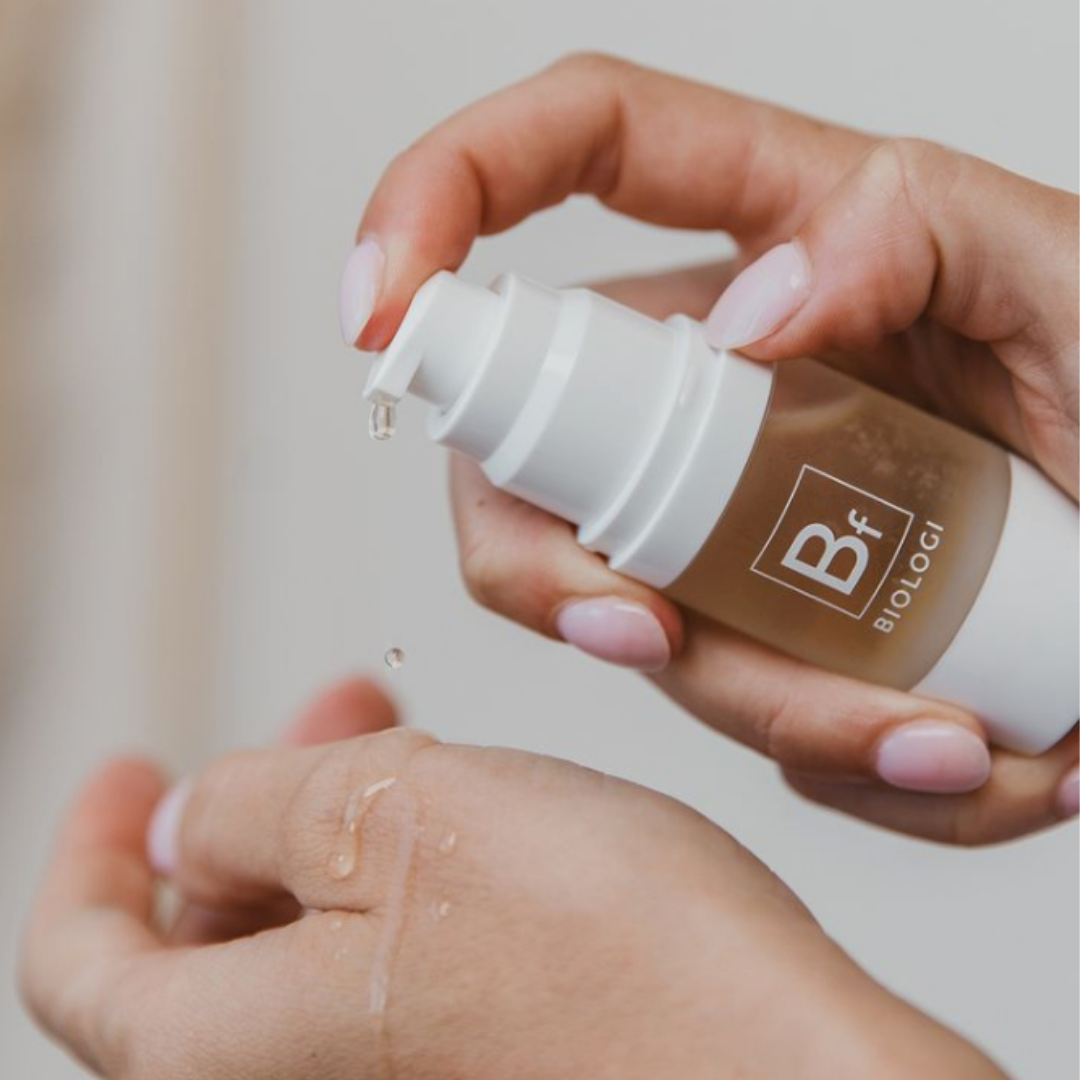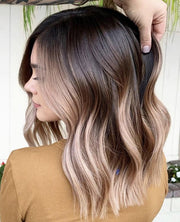
The One Step your Skincare Routine Needs for Brighter Skin
If you’re a skincare novice, or you just need a little reminder, we’ve got the tea on all things exfoliation, and why we all need it in our skincare routine.
First stop, what is exfoliation, and why do we need it?
Want the answer to clear, fresh and bright skin? We do too! Well sis, if you haven’t introduced your skin to our good friend exfoliation, trust us your life is about to change. Exfoliation is a technique of removing the top layer of dead skin cells from the epidermis (the surface of your skin that you can see), and encourages the live cells down in your skin’s dermis (the inner layer) to turnover (A.K.A rise to the top) and refresh your skin’s appearance.
Okay, now for some bad news; As we age the cell turnover process slows down (cue tumbleweed). Cells begin to gather unevenly on the skin’s surface which can lead to dry patches and a lacklustre appearance. But with bad news there is good news; Through exfoliating, we can mimic the skin’s youthful turnover process by encouraging the removal of dead skin cells to reveal the fresher, younger cells below while restoring skin’s natural clarity and brightness.
Who needs to exfoliate?
Well, we’re all different, and our needs are different but everyone should introduce this technique as it has many benefits for our skin. Exfoliating smooths your skin and increases circulation. However, some people can tolerate more aggressive exfoliation than others. If you have an impaired barrier, are sensitive or have recently undergone a treatment such as skin needling, or microdermabrasion, focus on nourishing and hydrating to improve your skin's barrier first. Otherwise, test exfoliating on a small patch of skin on your inner arm to gauge your tolerance.
How often should I exfoliate?
We recommend exfoliating your face and body 2-3 times a week (remember that cell turnover boost we all need?). However, more mature skin can be thinner and more sensitive. So, make sure to monitor how your skin reacts to exfoliating and adjust accordingly. You can still over-exfoliate which can lead to moisture loss, sensitivity, dryness and irritation. We don’t want a 10-steps back situation.
What is the best exfoliator?
The one that’s right for you! There are two basic approaches to exfoliation: physical and chemical exfoliation. Physical exfoliation is typically with a scrub, washcloth or brush. Chemical exfoliation using an active ingredient like an alpha hydroxy acid or an enzyme helps break the bonds that hold the uppermost layers of dead cells to the surface of your skin.
Now for the juicy part;
Introducing… Our top picks for achieving red-carpet ready, glowing skin;
While nothing replaces a professional facial, at-home exfoliation enables the maintenance that keeps skin radiant and healthy-looking. Thanks to Dr. Murad and his team of experts, you can mimic the glow of a microdermabrasion facial at home, for the times in-between your scheduled appointments.
Read on for all the glowing details (plus a few feel-good spa hacks).
Vita-C Triple Exfoliating Facial replicates a complete facial by exfoliating skin with three different types of exfoliants (chemical, physical, and enzymatic) and treating with gold-stabilised vitamin C for antioxidant defence & brightening benefits. The colour-changing formula indicates even application to make exfoliation an effective and gentle experience every time. And in two weeks, 87% saw brighter skin and 97% saw smoother skin.
Put a finger down if you suffer from Dryness. Irritation. Lack of clarity and brightness. Closed fist? It might be time to check out our Replenishing Multi-Acid Peel! This is a daily bi-phase acid face peel that accelerates cell renewal by 33% in 7 days while nourishing skin to prevent dryness and reduce irritation.
You may be wondering, what makes Murad’s acid face peel different? First of all, the green hue comes naturally from its blend of turmeric, eggplant, seaweed and adaptogen holy basil oil. Adaptogens are natural substances that help balance the body during stress. In skincare, they reinforce and support resistance to stressors like dehydration and pollution
But even more importantly, this bi-phase peel combines exfoliation, youth-boosting treatment and intensive nourishment for an acid peel mask that takes your skin from dull to glow in just one step—all while being effective, not aggressive. This is thanks to its revolutionary two-phase formula:
Phase 1: AHA, BHA and TXA blend removes dull surface cells to smooth and improve skin texture, brightness and clarity over time.
Phase 2: Adaptogenic holy basil, rich in antioxidants, and omega-rich oils are a soothing buffer that defend and strengthen skin’s surface and help accelerate skin recovery for a healthier-looking, more vibrant complexion.
If you’re worried that this acid peel mask may clog your pores, never fear. Replenishing Multi-Acid Peel is tested and proven to be non-comedogenic, (no clogging of pores). You can also pair this acid face peel with retinol. Since the Replenishing Multi-Acid Peel exfoliates dead skin cells, treatments like the Murad Retinol Youth Renewal Serum can penetrate the skin more effectively leaving your skin peelin’ good.
Want to exfoliate your way to a next-level glow? Or, maybe you’re looking to clear out pesky clogged pores. Any skincare professional will tell you their solution: chemical exfoliants.
When used in the same sentence, the words “chemical” and “face” may ignite concern. But, in the history of exfoliation, chemical exfoliants are some of the best things that ever happened in skincare. And, they’re clinically proven. Known as alpha hydroxy acids and beta hydroxy acids, professionals have used these skin-safe acids for decades to turn on a next-level glow, baby-soft smoothness, and clearer, smaller pores. Don’t fret—you can get these wonder exfoliants (and their results) in the comfort of your own home. But first, a fast lesson on what they are, how to use AHAs and BHAs, how they work, and which is right for your skin.
What are AHAs and how do they work?
AHAs are naturally occurring substances found in various fruits, sugar cane and sour milk. Glycolic acid, the AHA found in sugar cane, is used in many Murad products because it is especially well suited for use in skincare, and especially for acne prone skin. Lactic acid is a more gentle AHA that can help with hyperpigmentation, dark spots, sun damaged skin, fine lines, and a dull complexion.
AHAs loosen the bonds that hold together the top layers of dead skin cells. Think of your skin as bricks and mortar. The mortar is the “glue” that holds your skin cells (bricks) together. AHAs and BHAs dissolve that “glue” so skin cells (bricks) are easily removed.
Removing excess build-up on the surface of the skin allows newer, softer, healthier-looking skin to emerge. Skin looks refreshed, rejuvenated, and more youthful. An additional benefit to clearing excess build up is that moisturisers and treatments that follow can penetrate the skin better. Using AHAs does, however, make your skin more vulnerable to damage from the sun—a concern with any kind of exfoliating treatment. So always follow with an SPF during the day.
What are BHAs and how do they work?
BHAs, AKA naturally occurring substances. The most common BHA in skincare products is salicylic acid, which occurs naturally in willow bark and sweet birch.
Like AHAs, BHAs help loosen the bonds that hold together the top layers of skin cells. Also like AHAs, BHAs make your skin more vulnerable to damage from the sun, so again, always use an SPF during the day.
So.. What’s the difference between them?
The main difference is oil solubility. AHAs are water soluble only, while BHAs are oil soluble. This means AHAs stay on the surface of skin, whereas BHAs get down into the pores to cut through pore-clogging oil.
How do we use them?
The best way to use AHAs and BHAs is to determine which is right for your skin type. AHAs are incredible for skin showing signs of ageing, such as fine lines, wrinkles, dark spots, hyperpigmentation, and dullness or sun damage.
BHAs have powerful antibacterial and anti-inflammatory properties. This combined with their ability to penetrate the pore makes them perfect for treating acne-prone skin and blackheads.
Introduce your skin to AHAs and BHAs slowly. Begin using them twice a week until your skin acclimates.
AHAs and BHAs can be found in almost any kind of skincare product. There are AHA BHA cleansers, exfoliants, masks, and even moisturisers. Now that you know how to use AHAs and BHAs, it’s time to shop them in our products! You’ll find AHAs in our 2-in-1 AHA/BHA Exfoliating Cleanser, and BHAs in Outsmart Blemish Clarifying Treatment, Clarifying Cream and Clarifying Cleanser.
Our top tips for creating an at-home-spa for any space when you exfoliate for your pro glow;
Shower power: Fragrant, affordable, and fancy, eucalyptus hung from your shower nozzle emulates a spa vibe. And, the steam helps release the fragrance.
Get planted: Indoor plants freshen the air and create a space worthy of deep, cleansing breaths.
No-phone zone: Emulate one of our favourite spa rules: establish areas in your home where phones aren’t allowed.
Step things up: Follow the steps of a professional facial by removing makeup and cleansing before performing a microdermabrasion facial at home. After you exfoliate, follow with a serum and moisturiser, and an SPF during the day.
Spa ritual in a tube: Massage Vita-C Triple Exfoliating Facial over skin, then do something that makes you happy for 10 minutes as the enzymes work their magic.
So, what did we take from this? Exfoliating creates the foundation to clear, radiant, youthful and fresh skin! Head over to Oz Hair and Beauty to begin your exfoliation journey today!
categories









